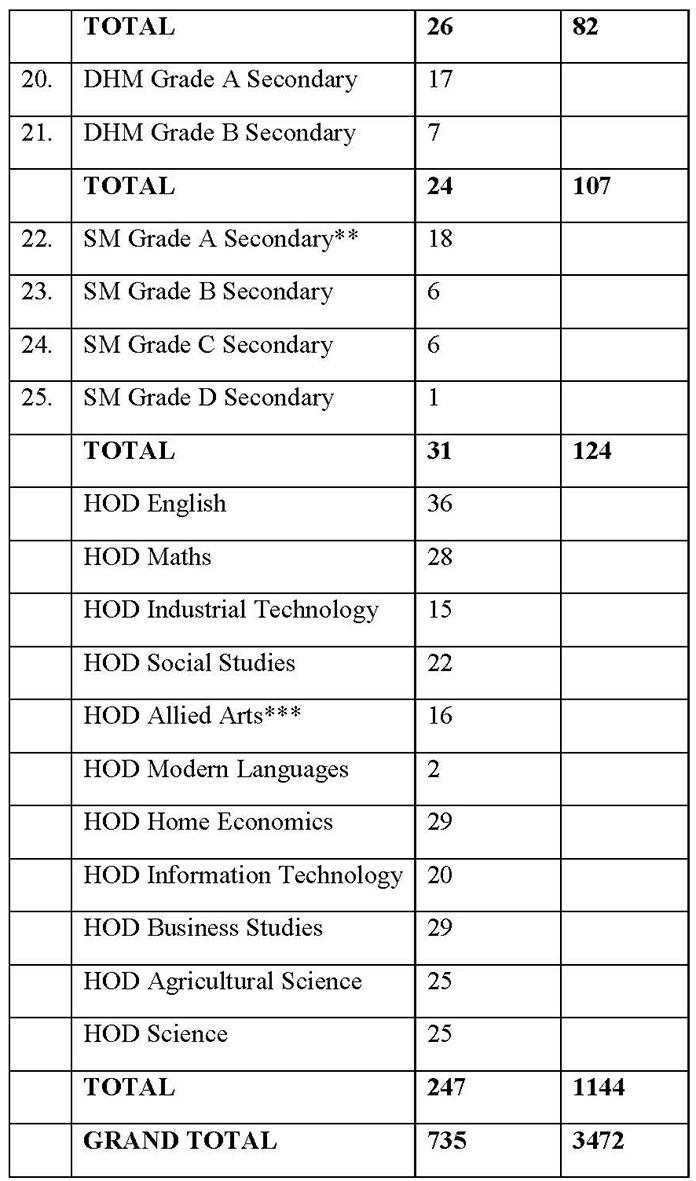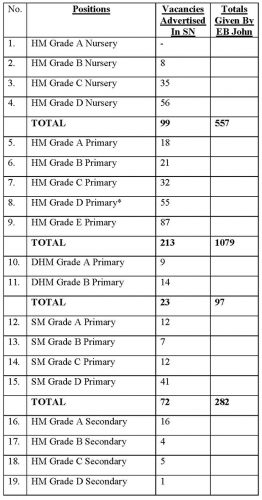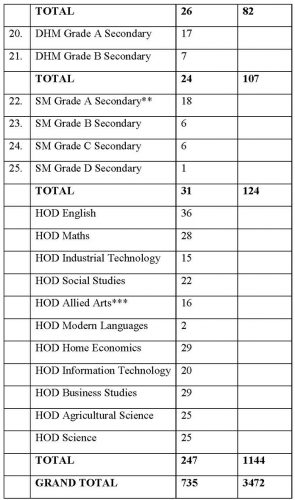Dear Editor,
My letter in Stabroek News of April 19, which has the headline: ‘Totals?’ was intended as a preliminary comment on a letter by Mr EB John in SN dated April 18, 2018 with the headline: ‘There are 3472 vacancies in education delivery.’ Mr John’s letter seemed to me at first glance as an attempt to fill a gap arising out of my failure to send at least one letter to Stabroek News commenting on the Vacancy Notice published by the Teaching Service Commission this year. However, I note that a very similar letter from Mr EB John appears in the April 19 edition of Kaieteur News under the headline: “There is a monstrous hole in the education system.” Here, Mr John asserts again that there are 3472 vacancies, and he proceeds to give all and sundry a first class caning.
Could I, with respect, inform those teachers who contacted me about their prospects of getting an appointment to one of those more than 3472 vacancies (Mr John says that vacancies for Practical Instruction Centres are not included in his statistics) that, excluding the vacancies in the Practical Instruction Centres, there were only seven hundred and thirty-five (735) vacancies advertised by the TSC in that edition of Stabroek News, and in this regard, there is really no “monstrous hole in the education system.” Incidentally, Mr John provides no figures for the vacancies for Head of Department, Allied Arts. Perhaps his total should be even higher!
You see, Editor, to offer a meaningful comment on TSC vacancy advertisements, one must first understand the system. Then one must physically count the names of the schools listed under each category. This will cater for instances where the printer’s devil intervenes (as with the Headships of Grade D Primary Schools where the actual count is 55 and not 52 as printed) or with the Senior Master positions where a school may have more vacancies than one.
I note that Mr John says: “The public and the Ministry of Education must draw their respective conclusions about what appears to be an endemic plight which anxious students have to face. In what language will they communicate, given the shortage of 250 [sic] related teachers? Is Creolese then an option?” Mr John could, with some very considerable profit to himself and his emancipation from apparent mental slavery that Bob Marley talks about, find out about the work of a Guyanese linguist Professor Hubert Devonish and his successes in Jamaica teaching through the medium of Jamaican Creole.
Editor, when scholars in the field, particularly those in the Society for Caribbean Linguistics, talk about the influence of Creolese on standard language performance on the formal occasion, some consider the position absurd. Harsh things are said about the children’s performance on the English A paper at the CXC examinations where sub grades are awarded for Understanding and for Expression, and then a final grade arrived at. The child has to mediate the Standard English in which the question paper is set, through the prism of his patent or latent Creole language. When we least expect, the latent Creolese rears its head and affects our interpretation of what we read. This may well have been one – repeat, one – of the contributing factors that could explain Mr John’s interpretational/understanding difficulties.
In comparing like with like, I show (below) my grand total of 735 in comparison with Mr John’s 3472. I shall not refer to Practical Instruction Centres at this point in time.
My sympathy, please, to any disappointed teachers.
Source: Teaching Service Commission Vacancy Notice in Sunday Stabroek of April 8, 2018.
Yours faithfully,
George N Cave







